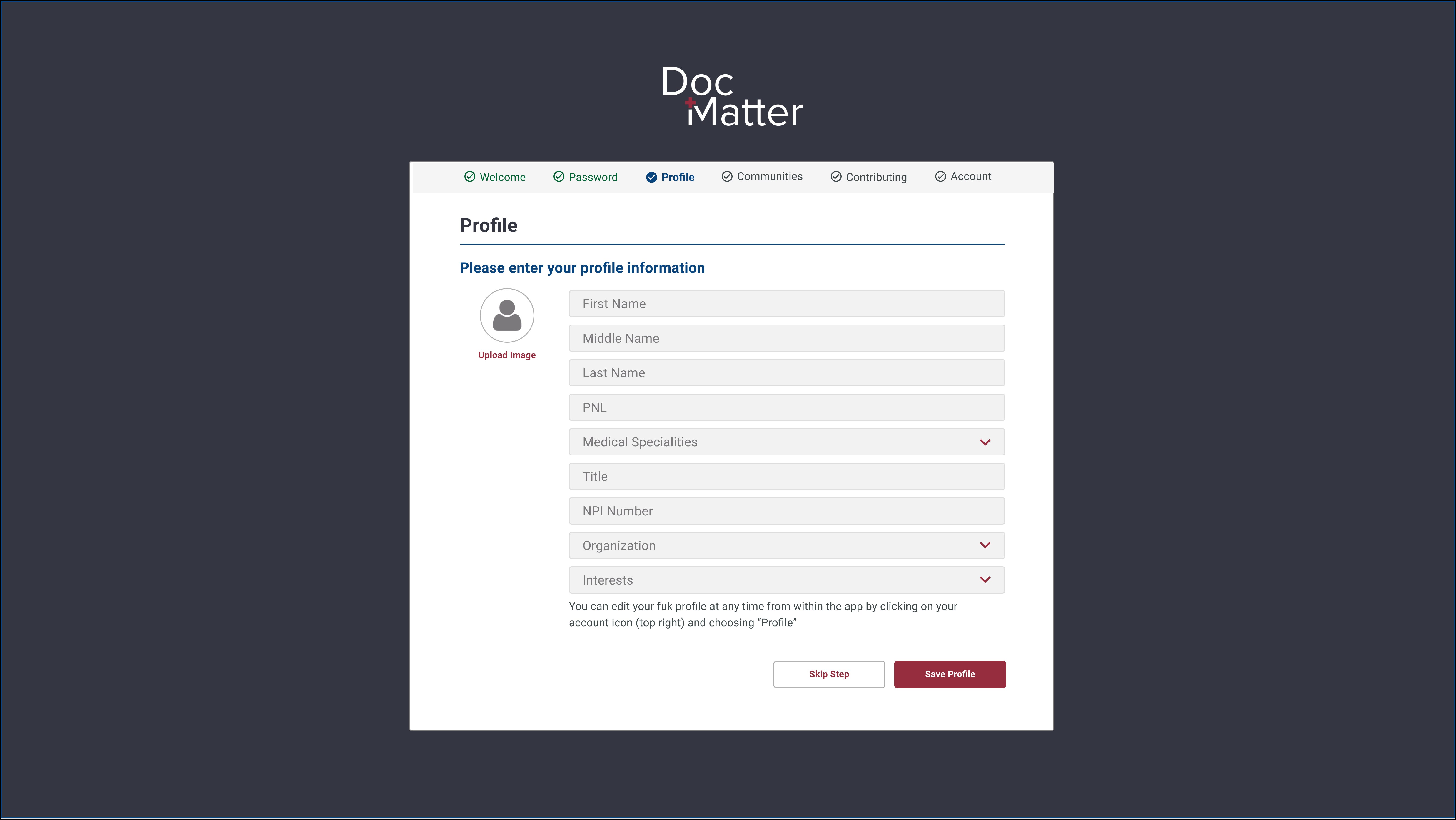Enhancing User Engagement
Driving Long-Term User Onboarding
DocMatter

Project Overview: Driving Long-Term User Onboarding
The Problem: New users were signing up but struggled to find value, leading to high early churn and missed opportunities for long-term engagement.
User retention beyond 30 days was low due to a minimal and uninspiring onboarding experience. Without clear guidance, users missed crucial platform features, resulting in significant drop-off rates before content discovery.
Goal: The primary goal was to increase the percentage of users actively engaged after 30 days and reduce early churn rates by providing a clear, structured, and valuable first-time user experience.
My Role and Responsibilities
As a key contributor to this project, operating within a small, agile team that included a Product Owner and two developers, I wore multiple hats. My involvement extended beyond design and project management, playing a significant role in product strategy. Throughout the entire lifecycle, from initial research to implementation and analysis, my responsibilities included:
- Product Strategy & Vision: Actively contributed to defining the product roadmap, identifying strategic opportunities for DocMatter's evolution, and ensuring proposed solutions aligned with overarching business goals and user needs.
- User Research & Data Analysis: Conducting qualitative and quantitative research to understand user behavior, collaboration patterns, and pain points within DocMatter.
- Problem Identification: Pinpointing specific usability issues, workflow bottlenecks, or missing functionalities affecting collaboration and productivity.
- Solution Brainstorming & Ideation: Collaborating with cross-functional teams (designers, developers, product managers) to generate potential solutions and new features.
- Design & Prototyping: Creating wireframes, mockups, and interactive prototypes for proposed changes and new features.
- User Testing: Facilitating usability tests to validate design decisions and gather feedback on proposed improvements.
- Implementation Support: Working closely with developers to ensure accurate and effective implementation of features.
- Performance Monitoring & Iteration: Tracking key metrics post-launch and suggesting further optimizations based on user data and feedback.
Research & Strategy
Our research focused on understanding why users were dropping off early and what a successful onboarding experience looked like. Key steps included:
- Analyzing user drop-off points within the first 30 days using MixPanel and in-house analytics.
- User interviews to gain qualitative insights into friction points and unmet needs during the onboarding process.
- Researching best practices from high-retention platforms to inform our design strategy.
The Solution
To address the challenge of low retention, we implemented several key enhancements to create a more engaging and effective onboarding experience:
- Designed an interactive onboarding flow that progressively introduced core platform features.
- Implemented personalized content recommendations to make the initial experience highly relevant to each new user.
- Integrated progress indicators to provide users with a sense of accomplishment and encourage completion of the onboarding journey.
- Added gamification elements to make the exploration of deeper platform features more enjoyable.
- Ensured the experience was fully optimized for mobile-first usability and overall accessibility.
Implementation & Collaboration
Our implementation process involved iterative design and close teamwork:
- Built detailed interactive Figma prototypes and rigorously tested them with real users to gather feedback.
- Collaborated extensively with the development team to ensure seamless transitions and efficient integration into the existing DocMatter platform.
- Conducted A/B tests on different onboarding variations (e.g., layout, messaging, feature introduction order) to identify the most effective approaches based on data.
Results & Impact
The new onboarding experience yielded significant positive outcomes:
- Doubled Durable Engagement: Users who completed the enhanced onboarding flow were 2x more likely to remain active on the platform after 30 days.
- Observed a notable increase in content discovery, which correlated with higher average session times.
- Achieved a reduction in first-week churn, successfully keeping users engaged beyond their initial sign-up.
- Established a repeatable frameworkfor future onboarding improvements and feature introductions.
Lessons Learned & Next Steps
This project provided valuable insights into effective user engagement strategies:
- What Worked:
- A clearly structured onboarding experience proved to be the most critical factor in improving user retention.
- Personalization was highly effective in boosting initial engagement and encouraging content discovery.
- Challenges:
- Finding the optimal balance between providing sufficient guidance and avoiding overwhelming users with too much information upfront was a continuous challenge.
- Next Steps:
- Further refine the onboarding experience using heatmaps and continuous user feedback.
- Explore new engagement triggers and strategies to maintain user activity beyond the initial 30-day period.
